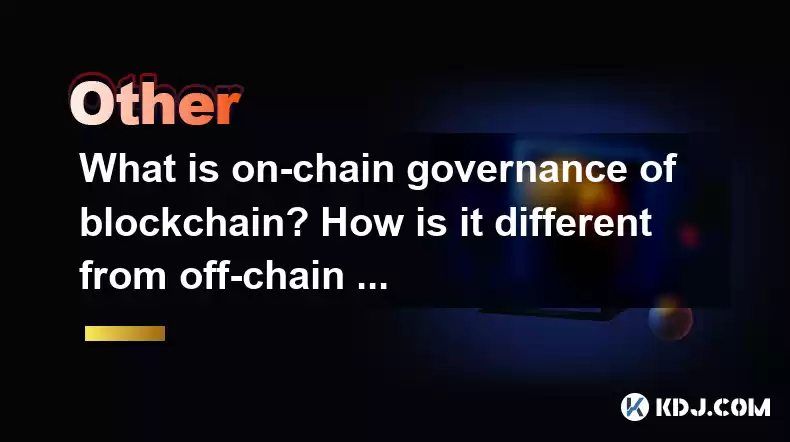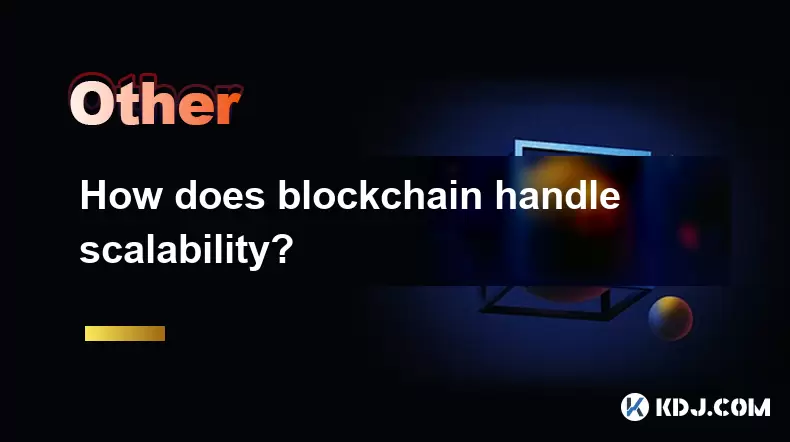-
 Bitcoin
Bitcoin $113900
-1.39% -
 Ethereum
Ethereum $3517
-4.15% -
 XRP
XRP $3.009
1.59% -
 Tether USDt
Tether USDt $0.9997
-0.04% -
 BNB
BNB $766.8
-1.41% -
 Solana
Solana $164.6
-2.38% -
 USDC
USDC $0.9998
-0.02% -
 TRON
TRON $0.3277
0.65% -
 Dogecoin
Dogecoin $0.2023
-1.67% -
 Cardano
Cardano $0.7246
0.05% -
 Hyperliquid
Hyperliquid $38.27
-4.77% -
 Sui
Sui $3.528
-0.52% -
 Stellar
Stellar $0.3890
-0.73% -
 Chainlink
Chainlink $16.16
-2.69% -
 Bitcoin Cash
Bitcoin Cash $539.9
-4.38% -
 Hedera
Hedera $0.2425
-2.00% -
 Avalanche
Avalanche $21.71
-0.97% -
 Toncoin
Toncoin $3.662
5.73% -
 Ethena USDe
Ethena USDe $1.000
-0.02% -
 UNUS SED LEO
UNUS SED LEO $8.964
0.35% -
 Litecoin
Litecoin $107.7
2.33% -
 Shiba Inu
Shiba Inu $0.00001223
-0.40% -
 Polkadot
Polkadot $3.617
-0.97% -
 Uniswap
Uniswap $9.052
-2.49% -
 Monero
Monero $295.1
-3.79% -
 Dai
Dai $0.9999
0.00% -
 Bitget Token
Bitget Token $4.315
-1.85% -
 Pepe
Pepe $0.00001060
0.11% -
 Cronos
Cronos $0.1342
-2.72% -
 Aave
Aave $256.0
-0.87%
What is on-chain governance of blockchain? How is it different from off-chain governance?
On-chain governance integrates decision-making into the blockchain, offering transparency and automation, while off-chain governance occurs outside, fostering flexibility and community engagement.
Apr 28, 2025 at 12:42 am

What is On-Chain Governance of Blockchain? How is it Different from Off-Chain Governance?
Introduction to Blockchain Governance
Blockchain governance refers to the mechanisms and processes by which decisions are made and implemented within a blockchain network. These decisions can pertain to protocol upgrades, changes in consensus rules, or the allocation of resources. Governance in blockchain is crucial as it determines how the network evolves and maintains its integrity and security.
Understanding On-Chain Governance
On-chain governance is a system where the decision-making processes and voting mechanisms are directly integrated into the blockchain protocol. This means that all governance-related activities, such as proposing changes, voting, and implementing decisions, occur on the blockchain itself.
In an on-chain governance system, token holders typically have the power to vote on proposals. Each token represents a vote, and the outcome of the voting process is automatically executed on the blockchain if it meets the required threshold. This method ensures transparency and immutability, as all actions are recorded on the blockchain and can be audited by anyone.
A prime example of on-chain governance is Decred (DCR). In Decred, stakeholders can vote on consensus rule changes and the allocation of the project's treasury. The voting process is facilitated through a hybrid Proof of Work (PoW) and Proof of Stake (PoS) system, where stakeholders stake their DCR tokens to participate in the governance process.
Advantages of On-Chain Governance
- Transparency: All votes and decisions are recorded on the blockchain, making the process open and verifiable.
- Automation: Once a proposal is approved, it can be automatically implemented, reducing the need for manual intervention.
- Inclusivity: Token holders can participate in the governance process, giving a broader community the power to influence the network's direction.
Challenges of On-Chain Governance
- Complexity: Implementing on-chain governance requires sophisticated smart contracts and consensus mechanisms, which can be challenging to develop and maintain.
- Security Risks: The integration of governance mechanisms into the blockchain can introduce new security vulnerabilities that need to be carefully managed.
- Scalability: High transaction volumes during voting periods can strain the network's capacity and lead to congestion.
Understanding Off-Chain Governance
Off-chain governance, in contrast, involves decision-making processes that occur outside the blockchain protocol. This can include discussions on forums, social media, or through dedicated governance platforms that are not directly integrated into the blockchain.
In an off-chain governance system, decisions are typically reached through consensus among key stakeholders, such as developers, miners, and community members. Once a consensus is reached, the changes are then proposed to the network and implemented through a hard fork or soft fork.
A notable example of off-chain governance is Bitcoin (BTC). Bitcoin's governance is largely informal and relies on the consensus of the community and key stakeholders. Proposals for changes are discussed on platforms like Bitcoin Improvement Proposals (BIPs), and if a consensus is reached, the changes are implemented through a network upgrade.
Advantages of Off-Chain Governance
- Flexibility: Off-chain governance allows for more flexible and nuanced discussions, as it is not constrained by the limitations of on-chain mechanisms.
- Community Engagement: It encourages broader community participation through forums and social media, fostering a sense of community and collaboration.
- Ease of Implementation: Changes can be proposed and discussed without the need for complex on-chain mechanisms, making it easier to implement.
Challenges of Off-Chain Governance
- Lack of Transparency: Since decisions are made outside the blockchain, the process can be less transparent and harder to audit.
- Centralization Risks: There is a risk that a small group of influential stakeholders can dominate the decision-making process, leading to centralization.
- Implementation Delays: Reaching a consensus off-chain can take longer, and implementing changes may require multiple rounds of discussion and voting.
Comparing On-Chain and Off-Chain Governance
On-chain governance and off-chain governance each have their unique strengths and weaknesses. On-chain governance offers greater transparency and automation, making it suitable for networks that prioritize these aspects. However, it can be more complex and resource-intensive to implement.
On the other hand, off-chain governance provides more flexibility and community engagement, making it a preferred choice for networks that value these attributes. However, it can be less transparent and more susceptible to centralization.
The choice between on-chain and off-chain governance often depends on the specific needs and values of the blockchain network. Some networks, like Tezos (XTZ), have adopted a hybrid approach, combining elements of both on-chain and off-chain governance to leverage the strengths of each.
Examples of On-Chain Governance in Action
To better understand on-chain governance, let's look at a few practical examples:
Decred (DCR): As mentioned earlier, Decred uses a hybrid PoW/PoS system where stakeholders can vote on proposals. The process involves:
- Stakeholders staking their DCR tokens to become eligible to vote.
- Proposals being submitted and discussed on the Decred forum.
- Voting occurring on the blockchain, with the outcome automatically implemented if approved.
Tezos (XTZ): Tezos employs a self-amending protocol where token holders can vote on protocol upgrades. The process includes:
- Proposals being submitted by developers.
- A voting period where XTZ holders vote on the proposals.
- If a proposal is approved, it is automatically implemented on the blockchain.
Examples of Off-Chain Governance in Action
Similarly, let's examine some examples of off-chain governance:
Bitcoin (BTC): Bitcoin's governance involves:
- Proposals being submitted as Bitcoin Improvement Proposals (BIPs).
- Discussions taking place on forums and social media.
- If a consensus is reached, the changes are implemented through a network upgrade.
Ethereum (ETH): Ethereum's governance process includes:
- Proposals being submitted as Ethereum Improvement Proposals (EIPs).
- Discussions occurring on the Ethereum Magicians forum and other platforms.
- If a consensus is reached, the changes are implemented through a hard fork or soft fork.
Frequently Asked Questions
Q1: Can a blockchain network switch from off-chain to on-chain governance?
Yes, a blockchain network can transition from off-chain to on-chain governance, but it requires significant changes to the protocol. For example, Tezos transitioned from a more informal governance model to its current on-chain governance system through a series of protocol upgrades. The process involves proposing and voting on the necessary changes, which can be complex and time-consuming.
Q2: Are there any hybrid models of governance that combine on-chain and off-chain elements?
Yes, several blockchain networks use hybrid governance models. Tezos is a prime example, where off-chain discussions and proposals are combined with on-chain voting and implementation. Another example is Polkadot, which uses a governance system that includes both on-chain voting and off-chain discussions to balance efficiency and community engagement.
Q3: How can token holders participate in on-chain governance?
Token holders can participate in on-chain governance by staking their tokens to become eligible to vote on proposals. The specific process varies by network but generally involves:
- Staking tokens to a designated address or smart contract.
- Reviewing and discussing proposals on the network's governance platform.
- Voting on proposals during the designated voting period.
- Monitoring the outcome and implementation of the voted proposals.
Q4: What are the potential security risks associated with on-chain governance?
On-chain governance can introduce several security risks, including:
- Smart Contract Vulnerabilities: The governance mechanisms rely on smart contracts, which can have bugs or vulnerabilities that attackers can exploit.
- 51% Attacks: In PoS systems, if a majority of the staked tokens are controlled by malicious actors, they could manipulate the voting process.
- Sybil Attacks: Attackers could create multiple identities to influence voting outcomes, though this is mitigated by requiring staked tokens.
Disclaimer:info@kdj.com
The information provided is not trading advice. kdj.com does not assume any responsibility for any investments made based on the information provided in this article. Cryptocurrencies are highly volatile and it is highly recommended that you invest with caution after thorough research!
If you believe that the content used on this website infringes your copyright, please contact us immediately (info@kdj.com) and we will delete it promptly.
- Bitcoin Strategy: Saylor's Not Hoarding, He's Building an Empire
- 2025-08-02 22:30:12
- Bitcoin Bloodbath: Macro Pressures and Liquidations Unleash Crypto Chaos
- 2025-08-02 22:30:12
- Tron, Cold Wallets, and Crypto Trends: What's Hot in the Market?
- 2025-08-02 23:10:12
- Bitcoin's Wild Ride: Davinci, Investors, and the $500K Dream
- 2025-08-02 23:50:12
- Worldcoin, Identity, WLD Price: Decoding the NYC Crypto Buzz
- 2025-08-02 21:10:12
- Shiba Inu: Utility and Community Strength Drive Crypto's Evolution
- 2025-08-02 21:50:12
Related knowledge

What is the difference between on-chain and off-chain transactions?
Aug 02,2025 at 04:22pm
Understanding On-Chain TransactionsOn-chain transactions refer to digital asset transfers that are recorded directly on a blockchain ledger. These tra...

What is the double-spending problem and how does blockchain prevent it?
Aug 02,2025 at 01:07pm
Understanding the Double-Spending ProblemThe double-spending problem is a fundamental challenge in digital currency systems where the same digital tok...

What is the difference between a blockchain and a database?
Aug 01,2025 at 09:36pm
Understanding the Core Structure of a BlockchainA blockchain is a decentralized digital ledger that records data in a series of immutable blocks linke...

How does blockchain handle scalability?
Aug 02,2025 at 02:58pm
Understanding Blockchain Scalability ChallengesBlockchain scalability refers to a network's ability to handle an increasing volume of transactions wit...

What is a hash in a blockchain?
Aug 02,2025 at 05:28am
Understanding the Concept of Hash in BlockchainA hash in the context of blockchain technology refers to a unique digital fingerprint generated by a cr...

What is a hash in a blockchain?
Aug 02,2025 at 04:43am
Understanding the Concept of Hash in BlockchainA hash in the context of blockchain technology refers to a unique digital fingerprint generated by a cr...

What is the difference between on-chain and off-chain transactions?
Aug 02,2025 at 04:22pm
Understanding On-Chain TransactionsOn-chain transactions refer to digital asset transfers that are recorded directly on a blockchain ledger. These tra...

What is the double-spending problem and how does blockchain prevent it?
Aug 02,2025 at 01:07pm
Understanding the Double-Spending ProblemThe double-spending problem is a fundamental challenge in digital currency systems where the same digital tok...

What is the difference between a blockchain and a database?
Aug 01,2025 at 09:36pm
Understanding the Core Structure of a BlockchainA blockchain is a decentralized digital ledger that records data in a series of immutable blocks linke...

How does blockchain handle scalability?
Aug 02,2025 at 02:58pm
Understanding Blockchain Scalability ChallengesBlockchain scalability refers to a network's ability to handle an increasing volume of transactions wit...

What is a hash in a blockchain?
Aug 02,2025 at 05:28am
Understanding the Concept of Hash in BlockchainA hash in the context of blockchain technology refers to a unique digital fingerprint generated by a cr...

What is a hash in a blockchain?
Aug 02,2025 at 04:43am
Understanding the Concept of Hash in BlockchainA hash in the context of blockchain technology refers to a unique digital fingerprint generated by a cr...
See all articles

























































































